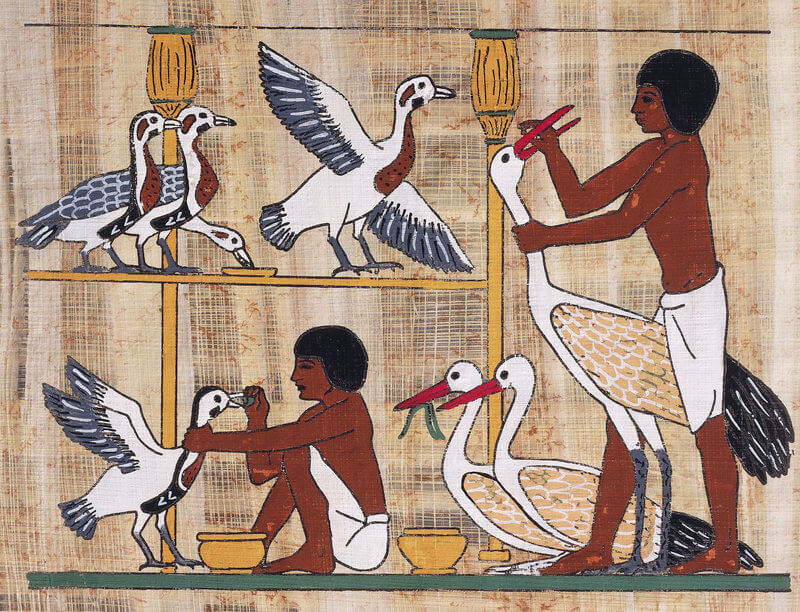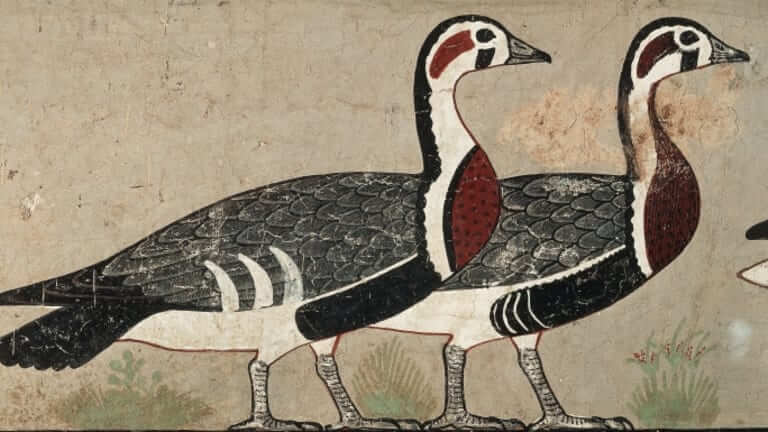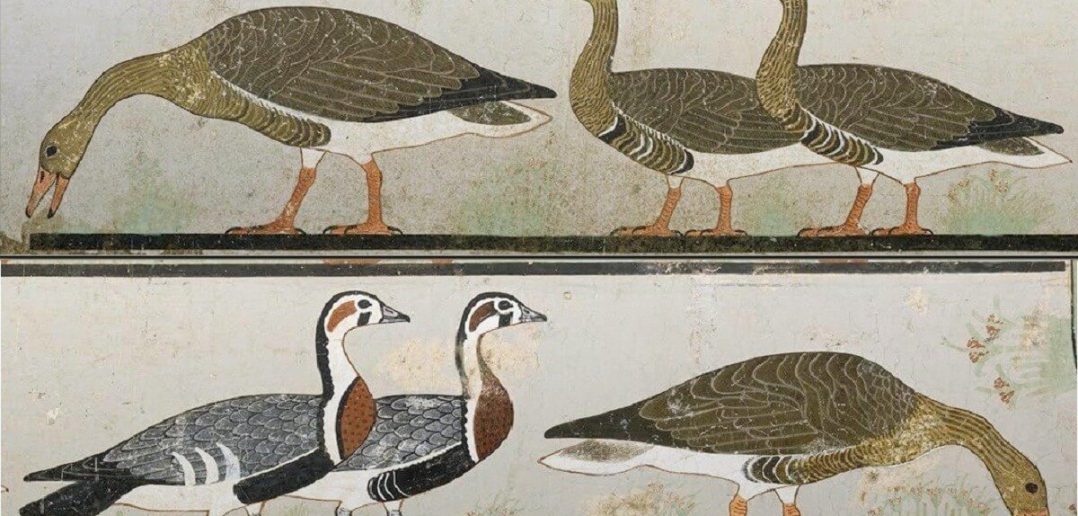Place of geese in history. Geese in the ancient Egypt, Romans and ancient Britons. Information on geese.
The ancient Egyptians decorated their walls with pictures of the red-breasted goose, which they probably kept as a pet, and the Greeks kept geese both as pets and for profit over 2,500 years ago. These geese were undoubtedly descendants of the wild grey lag goose, as are most of the farmyard geese today.

The Romans carefully bred these geese and eventually produced a stock of pure white birds which were larger and laid more eggs than the wild ones. Geese are excellent “watch-dogs”, for they make a noise as soon as anything disturbs them. This was well known to the Romans. In about 390 b.c. the Gauls made a surprise attack by night on the hillfortress of Rome called the Capitol. The geese there warned the Romans by their cackling.
The ancient Britons kept grey lag geese as pets, but did not eat them. In the middle ages, however, when many wild ones bred in the fens of eastern England, numbers of these birds were killed for food, while it is believed that others were caught and tamed, to become the ancestors of our domestic geese. Because of this and the drainage of the fens, the birds nested there no more after the early part of the 19th century.

As the number of wild geese was reduced, so it became more profitable to keep tame ones, and huge flocks were soon being reared in Lincolnshire. The farmers drove them to market several thousand at a time and the geese often had to waddle as much as eight or ten miles a day on the journey. The birds were not only used for food. Their feathers were plucked as often as five times a year to provide down for pillows and mattresses, the quills also being used as pens until nearly half way through the 19th century.
